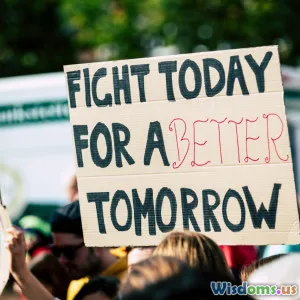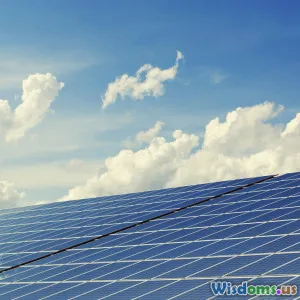
Climate Justice: Bridging the Gap
5 min read Explore how climate justice plays a vital role in achieving environmental sustainability for all communities. (0 Reviews)
Climate Justice: Bridging the Gap
Climate justice combines environmental sustainability with social equity, addressing how climate change disproportionately impacts marginalized communities. Across the globe, the fight for climate justice is imperative in ensuring both environmental health and human rights coalesce. This article delves into tangible examples and relevant frameworks, revealing why bridging the gap is of utmost importance and how we can contribute to achieving this goal.
Understanding Climate Justice
Climate justice is rooted in the belief that those who contribute least to climate change are often the most affected by its impacts. It highlights the historical context of environmental degradation, where richer nations and communities have often exploited resources at the expense of poorer, vulnerable populations. This imbalance calls for a fair approach that combines environmental policies with social equity.
The Origins of Climate Justice
Historically, the term ‘climate justice’ emerged in response to increasing recognition that environmental issues are deeply intertwined with socioeconomic injustices. Documented back to the 1990s, movements for climate justice arose particularly from communities most affected by environmental degradation such as indigenous peoples and low-income neighborhoods. An iconic moment was the 1992 Earth Summit in Rio de Janeiro, which emphasized sustainable development and propelled the global community to take a stand against climate-related injustices.
Key Principles of Climate Justice
- Equity: Ensuring that disadvantaged communities have equal access to environmental resources and decision-making processes.
- Recognition: Acknowledging the historical injustices and current disparities that exist across different regions and populations.
- Participation: Advocating for the inclusion of marginalized voices in policy-making and resource management.
- Responsibilities: Recognizing that those who historically contributed the most to climate change should bear a greater burden in funding and addressing its impacts.
The Connection Between Climate Justice and Sustainability
A Circular Relationship
Sustainability signifies meeting present needs without compromising future generations. Climate justice contributes to sustainability by ensuring that all community voices are heard. Just as sustainability seeks to remove the barriers hindering the use of healthy resources, climate justice strives to forge pathways toward lifting those immobilized by social equity issues. The relationship is circular: sustainability reinforces climate justice, setting in motion a ripple effect towards more equitable practices.
Real-World Examples of Climate Justice in Action
Several global initiatives exemplify the link between climate justice and sustainability, from community gardens in urban zones to international funding mechanisms for green projects in developing nations. One notable program is The Green Climate Fund, established under the United Nations Framework Convention on Climate Change (UNFCCC). It aims to assist developing countries in climate-resilient development, ensuring that those least able to cope with climate change can build sustainable futures.
Case Study: The Dakota Access Pipeline Protests
In 2016, the Sioux tribe protested against the Dakota Access Pipeline (DAPL) in North Dakota, voicing concerns over environmental impacts and water safety. This protest drew national and international attention to the broader issues of indigenous rights and climate justice, serving as a potent reminder of how marginalized communities are often overlooked in discussions about energy projects and resource management.
Case Study: Climate Justice in Puerto Rico
Puerto Rico presents a significant case in climate justice as it showcases the struggle of communities during and after the devastating hurricanes. In 2017, Hurricane Maria laid bare the weaknesses in the infrastructure and resource allocation systems on the island, predominantly affecting poorer neighborhoods already under-resourced. Numerous organizations are calling for a
Sustainability & Environment
Rate the Post
User Reviews
Popular Posts





















